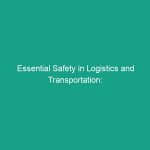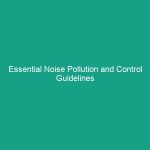Introduction
Good morning team! Today, we’re going to discuss a crucial topic that affects each one of us in our daily work life: Must-Know Trip Injury Prevention Guidelines to Avoid Workplace Risks. Understanding and implementing these guidelines is vital for our Safety and well-being. Trip injuries can lead to serious consequences, not just for the injured employee but for the entire team. Let’s dive into why this topic is important for us all.
Understanding Trip Injury Prevention Guidelines
Trip injury Prevention guidelines are essential protocols designed to minimize the risk of trips and falls in the workplace. These guidelines are critical because slips, trips, and falls are among the leading causes of workplace injuries. They can occur anywhere—be it on a construction site, in an office, or a manufacturing plant. Understanding these guidelines helps us maintain a safe working Environment and enhances our operational efficiency.
It’s a common misconception that trip injuries only happen due to negligence. In reality, they can occur from various factors, including poor housekeeping, inadequate lighting, or even improperly stored materials. By being proactive and aware, we can significantly reduce the chances of these incidents.
Key Hazards, Risks, and Safety Considerations
Identifying specific Hazards associated with trip injuries is the first step towards prevention. Some common hazards include:
- **Cluttered walkways:** Items left on the floor can create serious tripping hazards.
- **Uneven surfaces:** Holes, cracks, or uneven flooring can lead to falls.
- **Poor lighting:** Insufficient illumination can hide potential hazards.
- **Improper footwear:** Wearing inappropriate shoes can increase the risk of slipping or tripping.
Ignoring these hazards can lead to severe consequences, including injuries that may prevent employees from working for days or even longer. By recognizing these risks, we can take actionable steps to prevent accidents before they happen.
Best Practices, Procedures, & Actionable Advice
Now that we understand the risks, let’s explore some Best Practices to follow:
1. Maintain a Clean Work Environment
Always ensure that walkways and work areas are free from clutter. Regularly scheduled clean-ups can make a significant difference.
2. Use Proper Lighting
Ensure that all areas are well-lit, especially stairways and hallways. If you notice a dim area, report it immediately to your supervisor.
3. Wear Appropriate Footwear
Wear shoes that provide good grip and support. Avoid flip-flops or shoes without proper tread, especially in environments where slips are a risk.
4. Report Hazards
If you encounter any potential hazards, do not hesitate to report them. Quick action can prevent accidents before they occur.
5. Conduct Regular Safety Training
Participate in safety training sessions and encourage your colleagues to do the same. Knowledge is power when it comes to safety.
In a recent case at our facility, an employee tripped over a power cord that was left on the floor. Thankfully, they weren’t injured, but it served as a reminder for all of us to be vigilant about our surroundings and maintain a tidy workspace.
Regulations, Standards, and Compliance
Compliance with safety Standards is not just a legal obligation—it’s a moral duty. Organizations like OSHA (Occupational Safety and Health Administration) provide guidelines that help us understand how to create a safe working environment. By adhering to these Regulations, we not only protect ourselves but also our colleagues.
Understanding these regulations can empower us to advocate for safer working conditions. Regular audits and checks can help ensure compliance is maintained in our workplace.
Employee Engagement & Discussion
Let’s open the floor for discussion. What safety challenges have you encountered related to trips and falls? How can we work together to improve our safety protocols? Your insights are invaluable in creating a safer workplace.
Conclusion & Key Takeaways
To wrap up, we’ve covered essential trip injury prevention guidelines that are crucial for our safety. Remember, maintaining a clean work environment, using proper lighting, wearing appropriate footwear, and reporting hazards are all key strategies in preventing trip injuries.
Let’s make a collective effort to prioritize safety in our workplace. Thank you all for your attention and commitment to safety. Together, we can create a safer environment for everyone!


